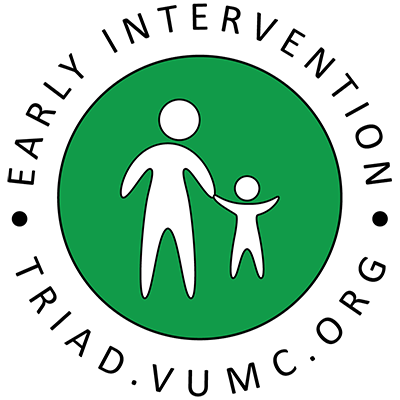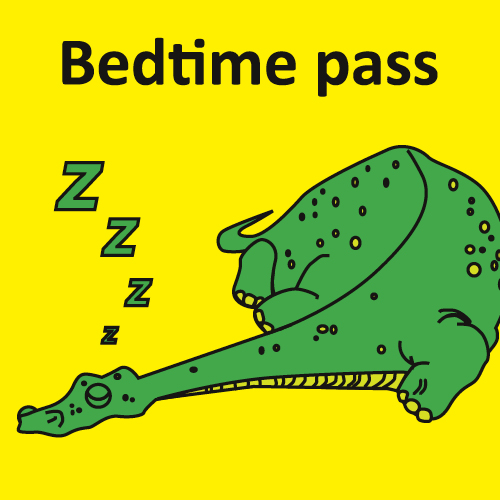
|
| TRIAD’s Toddler Topics • Summer 2018 |

|
|
|
| TRIAD Early Intervention Newsletter |
We just wrapped up our first Virtual Learning Community series that focused on addressing challenging behavior using TRIAD’s Early Intervention Challenging Behavior Curriculum. In case you missed it, check out some frequently asked questions and resources that can help you overcome some common hurdles you may face when working with families.
|
 |
☞ I don’t understand why he does it, the behavior just comes out of nowhere! Sometimes it can be challenging to determine why the behavior is occurring, but behavior never happens out of nowhere. There is always a function, a purpose it is serving for the child or it would not continue to happen. Help the family figure out what the function might be by using the ABCs of Behavior Worksheet to point out examples you see during your session. You can identify ABCs of positive behaviors and challenging behaviors and discuss with the family. Use the Functions of Behavior Tip Sheet to help explain why behaviors usually happen. If it is not easy to determine within a session or two, the family can take more frequent data using the Structured ABC Data Sheet. Sometimes more frequent data is required to determine what is most often reinforcing a behavior and an outside set of eyes can help them identify patterns they may be missing.
|

|
☞ I have all these visuals, but my child is not interested in them. Parents often receive too many resources or recommendations from a variety of sources all at once, and that can be overwhelming! Children will often not automatically be interested in visuals either, but we can still teach them what they mean through experience. Start by helping the caregivers identify one Visual Support they would like to use and one routine to use it in. Practice it during your session so they can see how it can be used and then give them a time to practice while you provide feedback. Sometimes experiencing success with one thing can motivate parents enough to try another-parents need reinforcement too!
|
 |
☞ I’ve already tried that, it didn’t work. Try using reflective questioning to help the caregiver identify why it might not have worked-what barriers did they face? What exactly did they do before and after the behavior and how often? Behavior change takes time and consistency. If caregivers try something once or twice that is already a lot of effort and don’t see immediate results, it can be really discouraging and easier to go back to doing things the way they used to. Make sure to take a step back and hear their concerns. Use the Replacement Behavior Menu to help them think about what they wish their child would do instead and how they can reinforce it. You may need to reference the Building Blocks of Communication to help them identify what communicative level their child is at and pick something that will be easy for the child to complete.
|
 |
☞ If I don’t put them in time-out or tell them it hurts when they hit, how will they learn? Punishment procedures can sometimes seem effective in the moment, but do not typically change behavior in the long run. Punishment procedures often do not have the same effect for children with communication delays or challenges with social cues/interactions as they might for siblings/peers. If the behavior is not decreasing with the way caregivers are currently responding, then it is not an effective punishment and will not work to change the behavior. It is important to help caregivers understand that Reinforcement is actually more powerful than punishment. Teaching their child a new, appropriate behavior that we can reinforce will provide longer lasting change in decreasing behaviors and allow for a more positive experience for everyone involved.
|
|
|
|
|
|
Our next Virtual Learning Community will highlight application of the strategies and tools in TRIAD’s Early Intervention Communication Curriculum Module. Each session will build upon the previous sessions so registrants are encouraged to attend all sessions. See the attached flyer for more details. Registration opened July 7.
|
|
|
| October 5: ABCs of Behavior |
| October 12: Identifying How and Why Your Child Communicates |
| October 19: Using the Framework for Communication |
| October 26: Applying the Framework for Communication I |
| November 2: Applying the Framework for Communication 2 |
| November 9: Caregiver Coaching and Wrap-up |
| |
|
|
Looking for more resources?
Tennessee Disability Pathfinder provides free information, resources, support, and referrals to Tennesseans with disabilities and their families.
Through three major program components-information and referrals, education and training, and community support-they provide information and resources to individuals of all ages, all types of disabilities, and any language spoken. Check out their list of upcoming events here!
|
|
|
|






